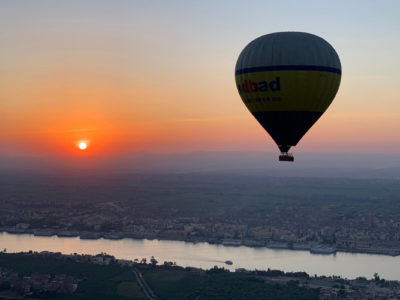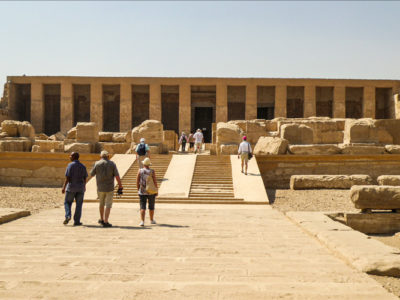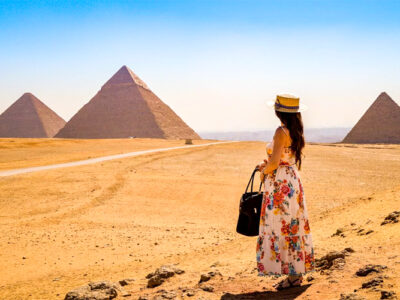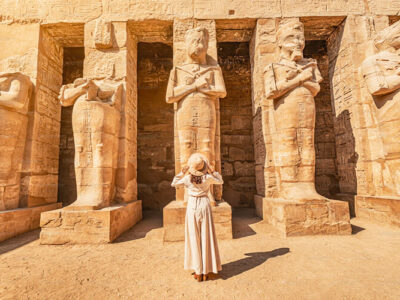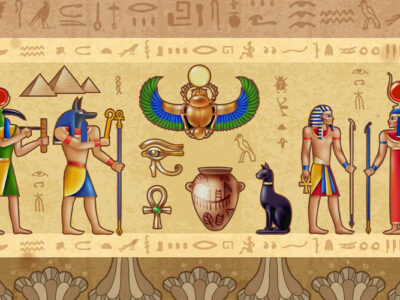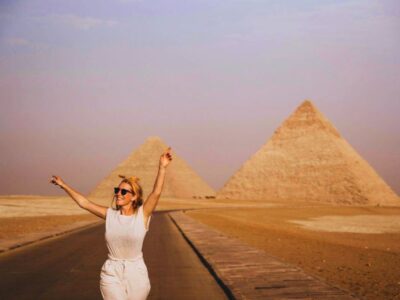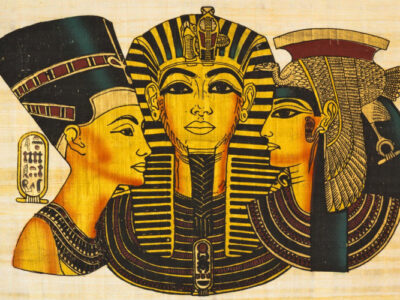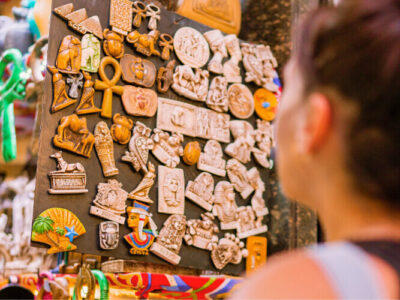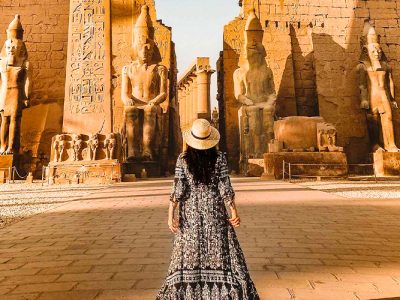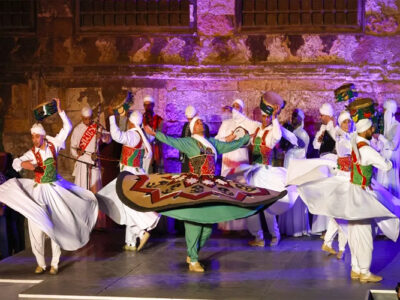Luxor day tours are the most incredible way to see all of the stunning sights in Luxor. Travel to one of the Middle East’s oldest and most impressive civilizations, visit the world’s biggest open-air museum, and spend your holiday immersed in the region’s rich entertainment and cultural offerings.
Explore the New Kingdom capital of ancient Egypt, the Mountain of Thebes, and the colossal structures and decorations carved on the temple walls while learning about the famous New Kingdom monarchs. To do so, we’ve listed the best Luxor day tours with Egypt’s best trip guides, who deliver in-depth explanations for each significant attraction on our custom Egypt itineraries. Join us on one of our unique Luxor Excursions from the Egypt Day Tours, Egypt’s ancient treasure trove, and see two-thirds of the ancient world’s treasures when you book now with your friends and family.
Top Luxor Day Excursions & Trips
Our Luxor day tours include stops at Karnak and Luxor Temples, the Valley of the Kings, Hatshepsut Temple, the Colossi of Memnon, the Dendera Temple complex, and the Temple of Seti I of Abydos, and the Valley of the Nobles. In the morning, Fly far above the city on a hot-air balloon trip over the Valley of the Kings and the Colossi of Memnon.
If you want a more relaxing way to see Egypt, you can enjoy our best Luxor and Aswan Nile cruises. You can stop to visit the temple of Kom Ombo, the Temple of Edfu, the Philae Temple, the Unfinished Obelisk, the High Dam, and the Abu Simbel Temple, which are located in Aswan. You can also spend a Cairo day trip from Luxor, visiting the Great Pyramid of Cheops, Chefren, Mykerinos, the great Sphinx, the Egyptian Museum, and Old Cairo before shopping in Khan El Khalili. Our Luxor day tours are also best for your Egypt winter vacation. You can check our complete guide for the best time to visit Egypt and book now from our Egypt tour packages to enjoy your Egypt vacation whenever you travel to Egypt.
Before your trip to Luxor Egypt, you should know that its attractions are on opposite sides of a river. Because the Nile runs through the middle of the city, you’ll have to plan two separate trips to see the western and eastern parts. Most of the city’s must-see sights, like the Valley of the Kings and others, are west of the metropolitan area.
On the other hand, the impressive Temple of Karnak, the Luxor Museum, and the Museum of Mummification are all on the site’s eastern side. You can also find the Temple of Luxor on this side, specifically on the east. This side of the Nile is where you’ll find the Avenue of the Sphinxes and some of the most modern and luxurious hotels. It is also where the Sharia al-Markaz and the Sharia al-Lokanda meet, a beautiful and enchanting place where tourists spend many hours shopping at one of the best bazaars and markets in the area. It is also where the Sharia al-Markaz and the Sharia al-Lokanda meet, a beautiful and magical place.
Luxor sightseeing
The ancient Egyptian capital, Thebes, was once the city now called Luxor. Egypt’s most famous temples, tombs, and monuments are in modern-day Luxor. Because of this, it is thought to be the best open-air museum in the world.
- The Valley of Kings
Another UNESCO World Heritage Site in Egypt is the Valley of the Kings. All tourists to Egypt should walk through this valley, which is about 10 kilometers northwest of Luxor, and be amazed by the beauty of the more than 62 tombs dedicated to the most famous pharaohs of the New Kingdom of Egypt, as well as the many others built in honor of queens, princes, pets, and even specific moments in daily life or the building of the mausoleum.
- The Valley of the Queens
The Valley of the Queens is one of the most popular places in Luxor because it has more than 70 tombs, many of which have beautiful paintings. A great example of this is the tomb of Nefertari, who was the ruler of Egypt during the 19th dynasty. The beautiful polychrome reliefs on her grave have been preserved over time and can still be seen by tourists visiting the site.
Many people believe that King Ramesses I started the Valley of the Queens. This is a myth that has been around for a long time. In reality, pharaohs and their wives were buried together before they took power. Even after this cemetery was built, it was common for wives and daughters to be buried next to their husbands.
- Karnak Temple
The Karnak Temple is in Thebes, on the east side of the Nile, not far from where Luxor is now. This vast complex comprises many different buildings, most of which were built in other parts of ancient Egypt at different times. During their time in power, the new pharaohs would change and improve what was already there.
Karnak is a city of temples built to honor the Egyptian god Amun. It has continued growing and becoming more prominent over the past 2,000 years. Even though the oldest buildings on the site are thought to be more than 4,000 years old, many others are much newer. Even by today’s standards, Karnak is the largest religious complex ever built.
- Luxor Temple
The large temple complex that goes by the name of Luxor is in the ancient Egyptian city of Thebes, which is close to the modern city of Luxor. Amenhotep III mainly built it, but Tutankhamun, Horemheb, and Ramses II added to it while he was in power. Because of this, it is thought to have been built around 1400 BCE.
Even though Luxor has a lot of old temples, the Luxor Temple is still one of the city’s most popular places to see. In 1979, the building was added as a World Heritage Site to the UNESCO World Heritage List.
- Hatshepsut Temple
The ancient Hatshepsut Temple, often called Djeser-Djeseru, is on the west bank of the Nile in Luxor. Queen Hatshepsut, who ruled in ancient Egypt during the 18th Dynasty, was in charge of building the complex, and she and the god Amun lived in the temple simultaneously.
The nearby tomb temple for Mentuhotep II was an essential source of ideas for the building’s design. It is a massive building with many levels and is considered one of Luxor’s most critical old temples. Some people think that the Queen Hatshepsut Tomb Temple is one of the most valuable things from ancient Egypt.
- Medinet Habu
In ancient Egypt, the temple that would later be called Medinet Habu was explicitly built to hold the tomb of Ramses III. This old Egyptian town is on the other side of the Nile from the modern city of Luxor. It is the second-largest ancient Egyptian temple ever discovered, measuring nearly 66,000 square meters in area.
One of the six oldest and most famous temples in Luxor, the Medinet Habu Temple, is a must-see. In addition to the temple, the Medinet Habu neighborhood has a mosque and a palace, both of which are ancient. However, these buildings are less impressive than the temple. The enormous statues of Ramses and the many well-preserved reliefs that decorate the temple are the main reasons why people come to see it.
- Dendera Temple
Even though this has never been proven beyond a reasonable doubt, many historians think that the Dendera Temple was built to honor Hathor, the sky and fertility goddess. The crocodile is often used to represent Hathor and was the city’s first official symbol.
Many experts think crocodiles are a big part of the visual culture of Egyptian cities. Archaeologists believe that the Egyptians used Dendera Temple almost exclusively, which makes it different from many similar tourist spots in Luxor. Only two small Christian buildings were found at the site, which supports this idea, and people need to put more importance on these buildings.
- The Colossi of Memnon
When people go to the Theban necropolis, the Colossi of Memnon, which are on the West Bank, are usually the first thing they notice. In ancient times, the Theban necropolis was the principal place where people from the city of Thebes were buried. The entrance to the temple that held Amenhotep III’s tomb was guarded by the Colossi of Memnon, two giant statues standing about 23 meters tall and facing each other across the entranceway.
During his time as king of Egypt in the 14th century B.C., Amenhotep III is said to have built the country’s largest and most beautiful temple complex. Historians think that if it were still standing, it would be even bigger and more impressive than Karnak, a vast temple complex on the other side of the river.
- Temple of Abydos
Many historians and archaeologists think Abydos, one of the oldest ancient settlements ever found in Egypt, is one of the most important archaeological sites ever seen.
Many people think that the sacred city of Abydos was built when the 1st dynasty of pharaohs was in power. This is something that people often need to correct. Most likely, predynastic rulers built the city, and many pharaohs from the 1st through the 13th dynasties added to it. People say that Abydos is where all the pharaohs who ruled Egypt during the 1st dynasty and some of the pharaohs who ruled during the 2nd dynasty were buried.

